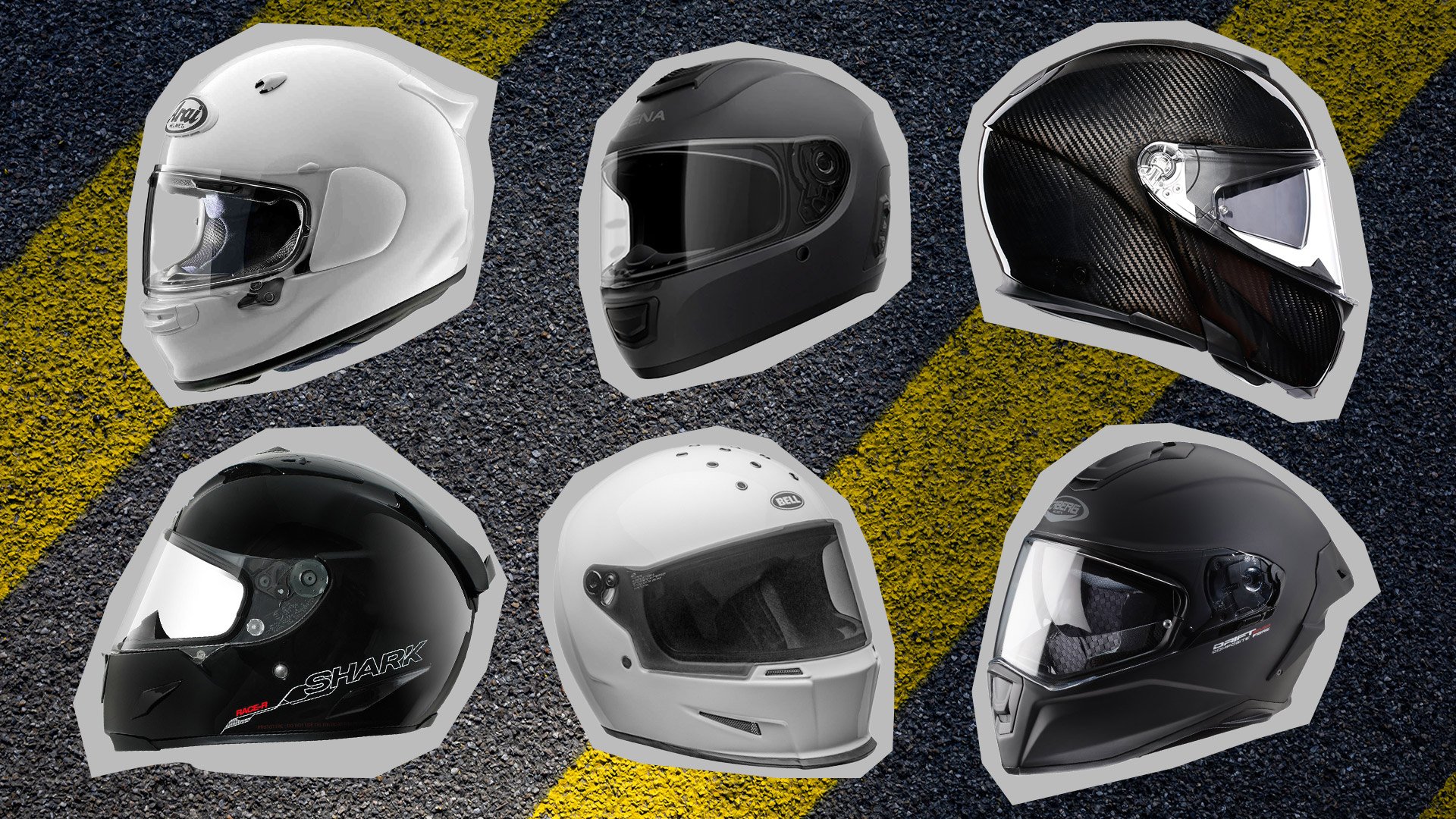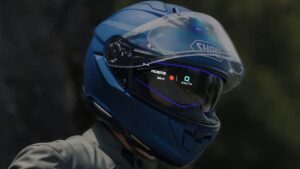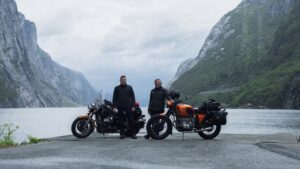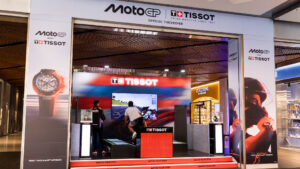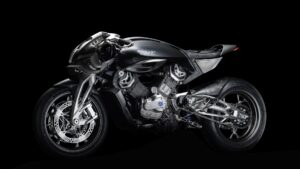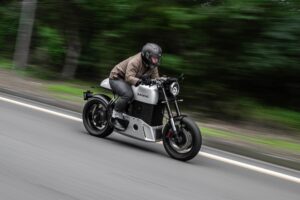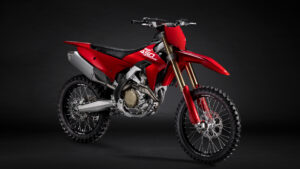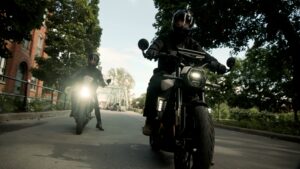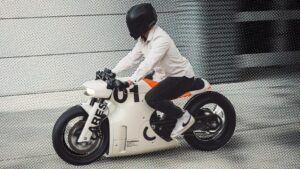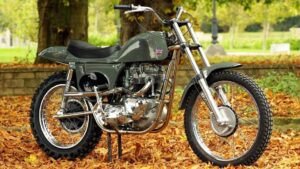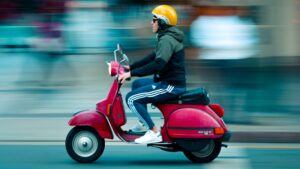Since I first published this article, the number of Australian-tested helmets has increased significantly —hence why I thought it was high time to update our best motorcycle helmets list.
As some of you may recall, the spotlight was originally cast upon a collection of the best motorcycle helmets from a protection standpoint (that included Motocross options).
RELATED: Real Motors’ Project Ares Is A Cafe Racer From The Year 3024
Due to the sheer amount of additional models tested between now and then, I’ve now decided to focus on road-riding helmets only; and added some personal thoughts about two models from Bell and Caberg that I’ve been using over the past two years.
This guide explores what to look for when buying, common questions, different helmet types, the top-rated products for safety, and for those who are interested, unpacks the very history of the motorcycle helmet.
Let’s get into it, shall we?
Jump To:
- The Best Motorcycle Helmets Right Now (Safety Tested)
- What are the best motorcycle helmet brands?
- What are the safest types of motorcycle helmets?
- What should I consider when buying a new motorcycle helmet?
- Two models I’ve recently tested
- The Best Motorbike Helmets: Concluding Thoughts From A Seasoned Rider
- Bonus: A Quick History Lesson
- Best Motorcycle Helmets — (Other) Frequently Asked Questions
The Best Motorcycle Helmets Right Now (Safety Tested)
The Consumer Rating & Assessment of Safety Helmets (CRASH) provide helmet buyers with independent crash and comfort assessments conducted by specialist laboratories.
CRASH awards a star rating from one to five for specific motorcycle helmet models, with results ranked and weighted based on their importance in reducing the risk of head and brain injuries in a crash.
The CRASH ratings for 2017 onwards consider the following:
- Energy reduction in a higher speed crash on a flat surface (30%)
- Energy reduction in a higher speed crash on kerb surface (15%)
- Energy reduction in a lower speed crash on a flat surface (15%)
- Helmet’s ability to minimise the rotation of the helmet in a crash (15%)
- Helmet coverage (10%)
- Oblique impact energy management (15%)
The Best Motorcycle Helmets For Road Riding (Protection Standpoint)
The comfort rating (also out of 100) is shown in brackets after the score. Many existing models have been revised for a lower comfort score.
- Sena Momentum Evo — 79/100 (56)
- Shark Race-R Pro — 77/100 (73)
- [NEW ENTRY] KYT NC Race Carbon — 77/100 (59)
- [NEW ENTRY] Arai Quantic — 76/100 (68)
- [NEW ENTRY[ AGV Sport Modular — 76/100 (57)
- Bell Star (With Angular Impact Management System) — 76/100 (63)
- [NEW ENTRY] Icon Airflite — 76/100 (63)
- [NEW ENTRY] X-Lite X-803 RS — 76/100 (58)
- [NEW ENTRY] HJC RPHA 70 — 75/100 (66)
- HJC RPHA 90 — 75/100 (66)
- Valor — 75/100 (52)
- Bell Race Star — 74/100 (74)
- HJC RPHA 11 — 74/100 (71)
- Bell RS2 — 74/100 (56)
- [NEW ENTRY] HJC I90 — 74/100 (56)
When I first published the list back in 2020, the standout performers in the CRASH testing were Sena, Shark, Arai, Bell, and HJC. However, more models have been tested since, i.e. KYT, AGV, Icon, and X-Lite.
With this information in mind, it might be worth investigating the lesser-known brands pushing innovation boundaries when it comes to buying a new helmet.
It’s also worth checking this list every couple of years and updating your helmet accordingly. Just because a brand is iconic or historically significant, doesn’t mean its products are going to protect you.
Side note: It’s interesting to see Airoh, a motor racing favourite, excluded from the list above.
What are the best motorcycle helmet brands?
The word “best” must take into consideration many aspects.
For the purpose of this best motorcycle helmet piece, our list includes historic manufacturers that paved the way for helmet innovation, notable emerging, and key manufacturers, those that score well in regard to safety, as well as those creating quality products at an affordable price point.
Airoh
Airoh Helmets was born in Italy in 1997 when founder Antonio Locatelli who, at the time, produced helmet components for a number of well-known premium European manufacturers, launched his own range of products utilising over a decade’s worth of innovation and expertise. Airoh’s mission is crystal clear: make the quality, safety, and innovation of the helmets reserved for racers available to every motorcyclist.
Arai
Arai Helmets was founded in 1937 by Hirotake Arai, originally as a hat manufacturer. The company shifted to protective helmets in the late 1940s with motorcycle helmets introduced in 1952 to satisfy Hirotake’s own need for riding insurance. In 1976, Hirotake’s son Mitch made the decision to make Arai better than average and set a goal to “be the number one helmet in the world.”
AGV
AGV was founded in 1946 by Gino Amisano and his two partners as a manufacturer of saddle covers and light helmets. Amisano evolved into Vespa and Lambretta parts alone before meeting his soon-to-be wife, Luciana Morando. In 1947 the pair launched their first helmet and followed with a fibreglass iteration in 1954, marketing the company with much success (and aided in recent years by Valentino Rossi). Today, it’s owned by Lino Dainese, President of Dainese S.P.A., who bought AGV on July 30th, 2007.
Bell
The Bell Helmet Company (AKA Bell Helmets) began its life in 1923 as Bell Auto Parts, named after its HQ in Bell, California. Roy Richter, who was working for the company, purchased the store in 1945 for $1,000 and began producing helmets in 1954. Today, Bell produces helmets for all types of racing sports, retaining its focus on creating the best safeguards for everything from regular road travel to landspeed racing. You can read more about the history of Bell over at lowbrowcustoms.com.
Caberg
Founded in Bergamo in the North of Italy in 1974, Caberg is an acronym for Caschi di Bergamo (Helmets from Bergamo). Caberg was the first Italian company to introduce a flip-up helmet (second worldwide), and has remained at the forefront of modular helmet innovation ever since.
Fox
Fox Head Inc (operating as Fox Racing) was founded in 1974 by Geoff Fox and built its business by developing clothing for motocross. These days, the brand has shifted into apparel for other extreme sports but maintains a strong motocross focus, creating helmets that are innovative, affordable, and safe.
Hedon
Hedon was created in 2011 by Reginald Flint and Lindsay Chong, a pair with extensive experience in design and helmet crafting. They set out on a mission to rethink the urban rider’s protective headgear creating something bold, refined, and nostalgic with comfort as a driving point above all else. Hedon is more of a luxury motorcycle helmet brand than a performance manufacturer.
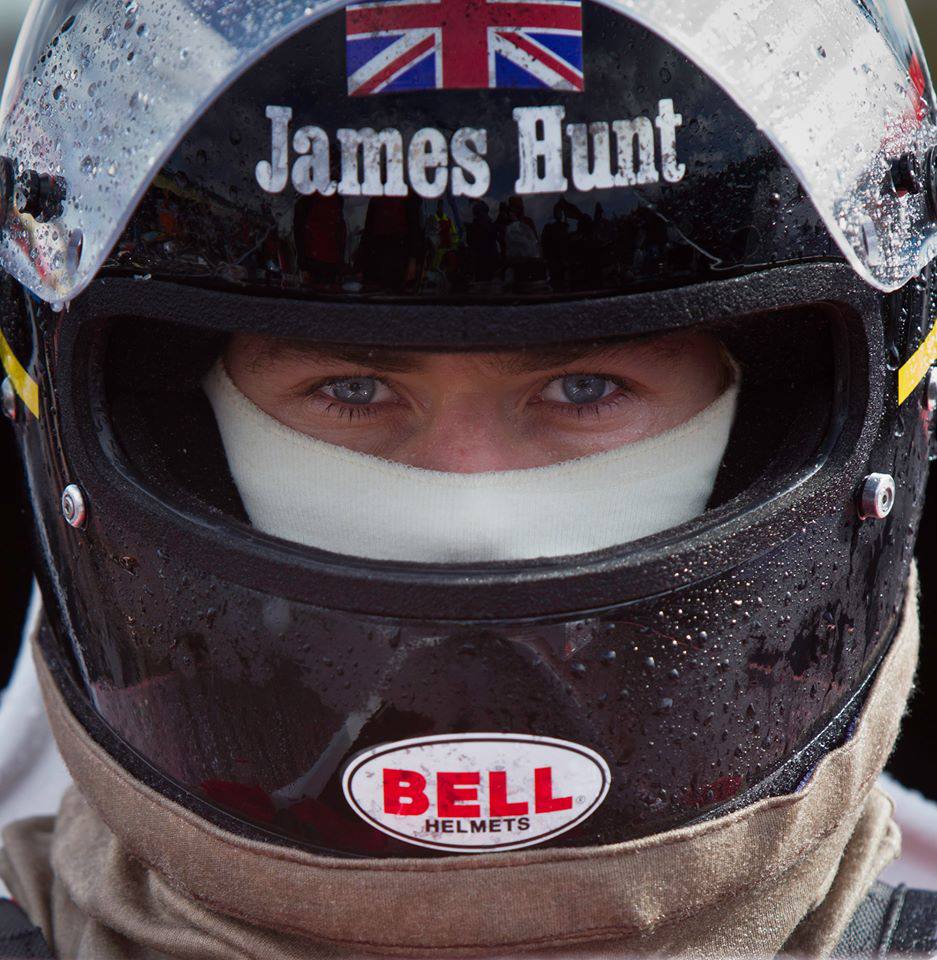
HJC
Headquartered in Seoul, Korea, HJC has been producing helmets since 1971. Founded by W.K. Hong, the brand became the top-selling helmet manufacturer in America in the 1990s after ramping up its quality control and innovation, focusing on advanced material construction, strength, and lightweight performance. HJC continues to spend about 10% of its revenue on R&D and is well-regarded for quality and affordability.
LS2
LS2 saw its beginnings in the 1990s when Arthur Liao created a home-based business in rural China to make helmets. In 1992, Liao opened a new factory to cater for demand and grew from one employee to over 100. By 2005, the company was manufacturing two million helmets each year. LS2 entered the Australian market in 2012 and claims 30% year-on-year growth via their distributor Monza imports.
Nolan
Nolangroup is an Italian company founded in 1972 by Lander Nocchi, who began producing injection moulded polycarbonate shell helmets. It is the largest producer of helmets in Europe and the only company in the sector to produce entirely in Italy through a fully integrated production process.
SCHUBERTH
SCHUBERTH was founded in Germany circa 1922 and entered the helmet business in 1929 before producing its first motorcycle helmet in 1954. Today, their portfolio includes helmets for workers, police, fire brigade, motorcycling, and even Formula 1 — having even graced the head of three-time world champion Max Verstappen. Readers of MOTORRAD, Europe’s largest motorcycle magazine, have named SCHUBERTH their best brand for 13 years in a row.
Shark
Shark was founded in Marseille, France circa 1986 by former professional racers the Teston brothers, who were determined to create one of the world’s safest helmet brands. Known for its innovation, in 1991, it became the first brand to have industrially manufactured a helmet using carbon fibre. The brother’s ethos remains to this very day, pushing the technical boundaries by reinventing the motorcycle helmet industry.
SHOEI
Much like their very first helmet created by the brand’s founder Eitaro Kamata back in 1959, SHOEI has established itself as the preeminent manufacturer of handmade helmets, with over 50 people involved in the construction of each and every helmet. SHOEI combines the latest in technology with consumer feedback, modern testing practices, advanced materials, and 60 years of helmet-building experience.
What are the safest types of motorcycle helmets?
Are you after an adventure helmet for enduro riding?
An open-face helmet for summer beach trips on your scooter?
Or perhaps it’s a full-face motorcycle helmet to use on track days with your Panigale V2 Bayliss that you’re leaning towards?
Whatever the case, each option offers drastically different protection for riders due to its construction.
To properly gauge the safest motorcycle helmets, it’s vital to look at the type of motorcycle helmet, as those that cover the whole head provide infinitely more safeguards than open-face models.
Let’s take a look below.
Full-Face Helmet

The full-face motorcycle helmet covers the whole face and head with inner padding, thus providing the rider with a snug and secure fit; and offering the most coverage for your neck. Full-face motorcycle helmets feature a chin bar and ventilation system integrated into the outer shell to protect your face from potential impact — a key safety feature other styles lack. Many also feature internal sun visors.
Modular Helmet
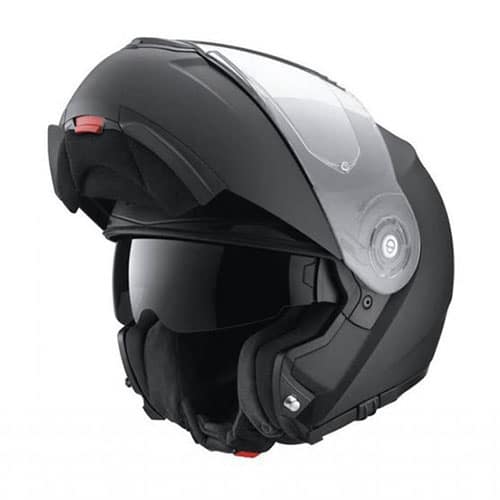
Modular motorcycle helmets (AKA “convertible” or “flip-face” helmets), combine an open helmet structure with a visor and chin bar that can flip up to reveal the face of the rider. Unlike a full-face design, which is a single structurally rigid outer shell, modular helmets utilise a hinge that is more susceptible to breaking and exposing the face on impact. The modular helmet is not designed to be ridden open.
Open-Face (¾) Helmet

Open-face helmets like the Bell 500 (AKA the ¾ helmet), cover the top, back, and sides of your head, but leave the face exposed without cheek pads to secure the helmet. The design prioritises price point, comfort, and style; and is popular with city commuters as well as the cafe racer crowd. Some feature a detachable sun visor, sun shield, or face shield, which can add security against potential impact.
Dual-Sport Helmet
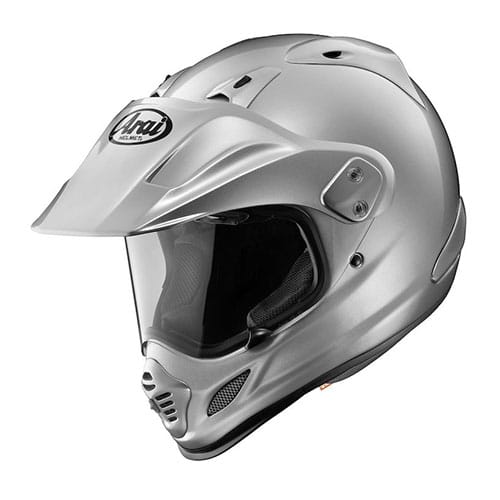
Dual-sport (Crossover, ADV, Hybrid, Enduro) helmets are a mix between a full-face and off-road helmet, designed to be used both on or off-road. Typically, they feature an outer shell like off-road or modular helmets with an elongated chin bar and space for goggles, but with more interior padding for added comfort on longer rides.
Off-Road Helmet

Off-road full-face motorcycle helmets are characterised by their accentuated chin bar to boost airflow and wide eye ports (no face shield) to allow for goggles and an extended field of vision. An adjustable sun visor also protects from glare and allows riders to dip their heads and block roost from bikes in front. They are typically designed with an aggressive riding style in mind (maximum protection, minimum weight).
Half Helmet
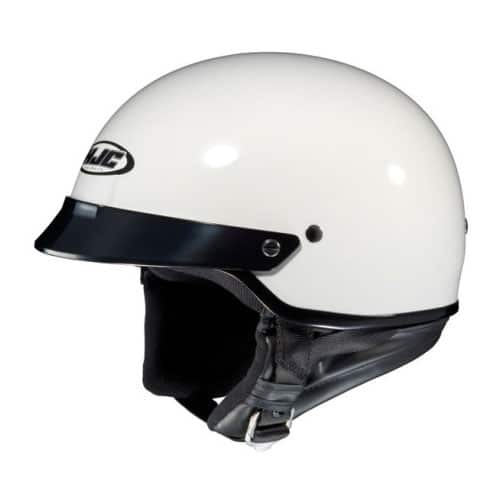
Half helmets sit primarily on top of your head, with shielding around the back of the skull and over the ears. The helmet design comes with no facial protection (or occasionally an optional face shield) and the propensity to move or dislodge upon impact, they provide limited features for riders; thus suiting a casual/carefree riding style. The price point is generally low.
What should I consider when buying a new motorcycle helmet?
Start by familiarising yourself with the best motorcycle helmets.
Consider new models to market, model updates, innovation and material advancements, safety testing, and consumer feedback. You then must work out what type of helmet you are after, depending on what and where you ride.
All helmets sold in Australia must comply with the Australian AS1698 or European UNECE22.05 standard and are marked accordingly; and those stickers are not to be removed.
Finally, it’s worth cross-checking how your desired helmet performs in impact testing (see more below) before picking your number one.
While it may be cost-effective, buying motorcycle helmets online is not recommended. Motorcycle helmet fit is the most important factor in choosing the right helmet, and each brand will treat your head shape differently — not to mention size differently.
You might wear glasses that affect fit, you might find out you’re a medium in one brand but large in another, or you might work out the pricier helmets don’t fit you that well. You can only work this out by holding them, analysing their features, and actually trying them on.
Pick up the phone, call around, and speak to different retailers in your area. If you see a better price on the internet for the model you’re after, try your luck and ask for a price match, then ask to set aside the size you think you are and the sizes on either side to ensure the perfect fit.
Most importantly… a new helmet should be as tight as you can comfortably wear it.
Two models I’ve recently tested
After I’d initially written this article, I spent some time with the Bell Qualifier DLX, rated at 67/100 for safety and 75/100 for comfort.
Retailing at approximately $280, it’s definitely an entry-level full-face option which I found to be tight around the side of my head and not very comfortable to pull on — nor did I look forward to wearing it for longer rides.
In the Bell, I wore an M, like my KBC-manufactured Harley Davidson motorcycle helmet.
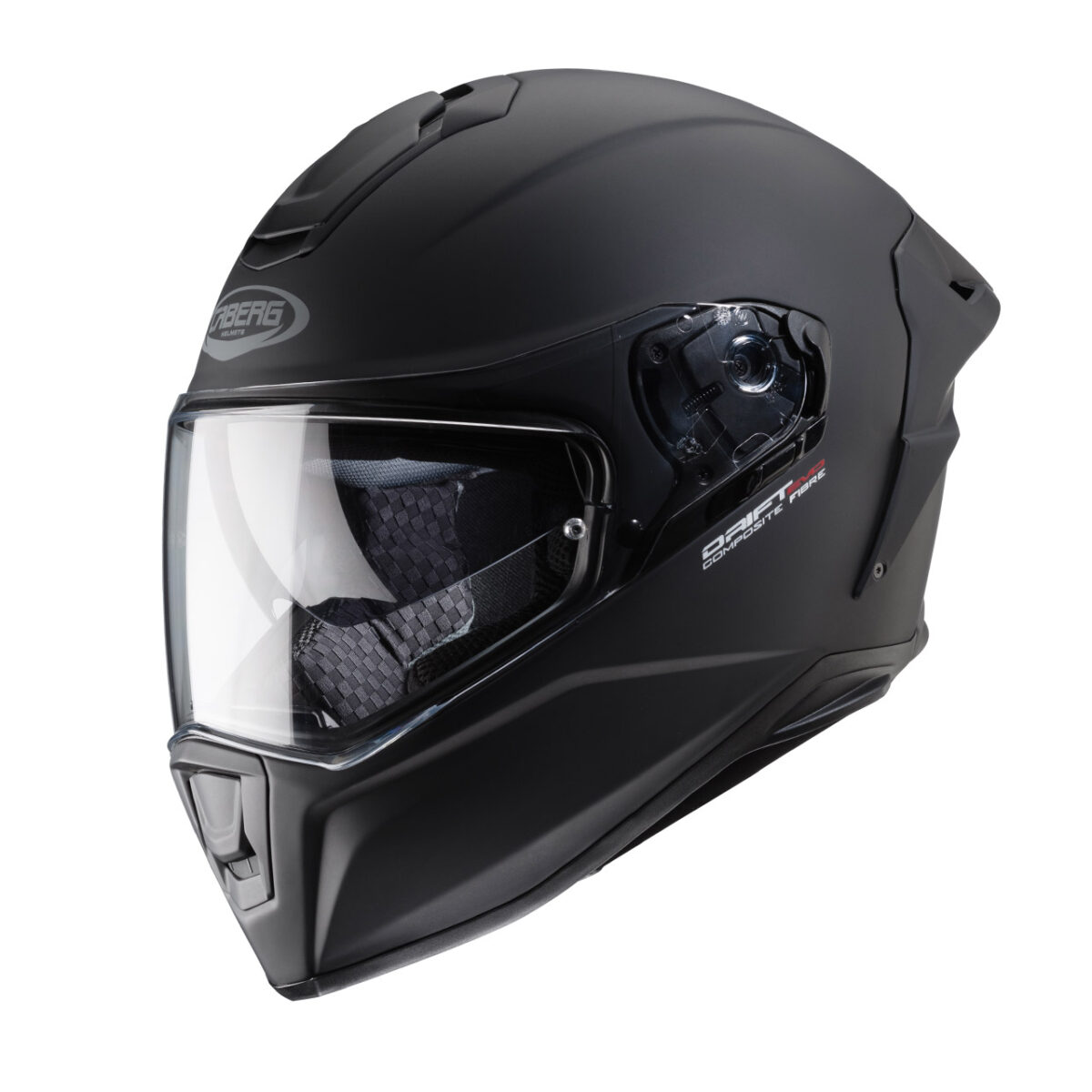
After reading my article, the team over at AMA Warehouse reached out to ask me if there was anything I’d like to pilot and after much discussion about which brands they recommended, I settled on a Caberg Drift Evo which you can purchase on sale at AMA for $399.95.
It’s on an entirely different level to the Bell Qualifier for not a whole lot more money.
Interestingly, I also had to go up a size, which re-iterates my point about trying different products to ensure a perfect helmet fit. The Drift Evo suits the shape of my head a lot better than the Bell and feels like a better-made product in every conceivable way.
CRASH has yet to rate many of the Caberg models, which is unfortunate because I’d love to see where it sits on the scale of protection and comfort. Especially given it certainly trumps Bell on the latter.
The Best Motorbike Helmets: Concluding Thoughts From A Seasoned Rider
I began researching this article because I wanted to find a replacement for my KBC-manufactured Harley-Davidson motorcycle helmet; and because I wanted to purchase a secondary helmet for my then-girlfriend (now wife and mother of my two children).
Considering the latest results from Crash and my budget of sub $600 per helmet, it would be hard for me to look past the full-face Shark Race-R Pro with the highest average rating in the list of best motorcycle helmets.
In plain black, you can often find it on sale for around $550. If you prefer white for visibility, expect to pay north of $600. I think the trade-off for comfort compared to the Sena Momentum Evo makes it a no-brainer.
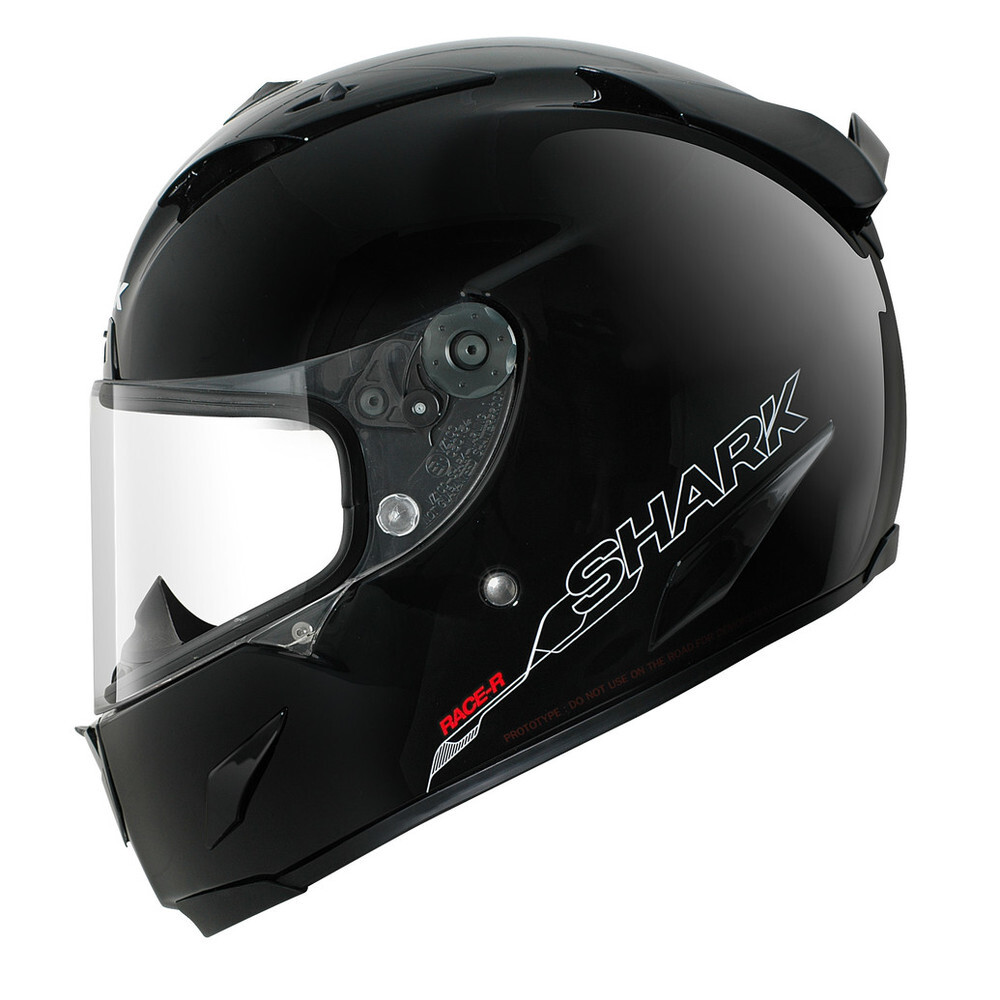
Like many, style is important to me. I don’t want my helmet to look too extreme or too street bike, which means no loud graphics or colours; taking the KYT NXC Race Carbon off the table — although their $599.95 NZ Race in Matte Black admittedly looks great.
The additional visibility offered by white is appealing. The Airoh Quantic is offered in white but it comes with a much higher price tag in Australia at $999; black is generally sold for ~$850.
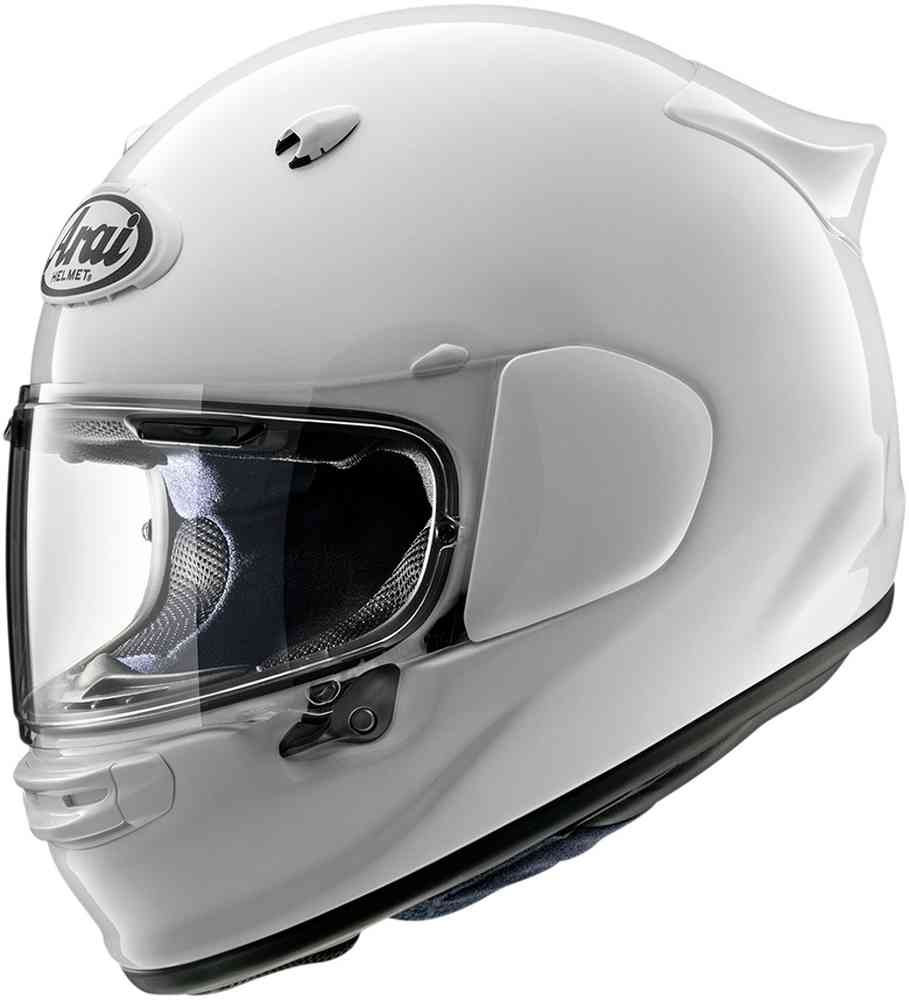
The AGV Sport Modular is a new addition and is rated superbly for a modular helmet. In fact, it’s the only one on the list. It also looks fantastic in the carbon.
If you’re in the market for a modular helmet, I don’t see why you’d look elsewhere, however, it is expensive at $999.
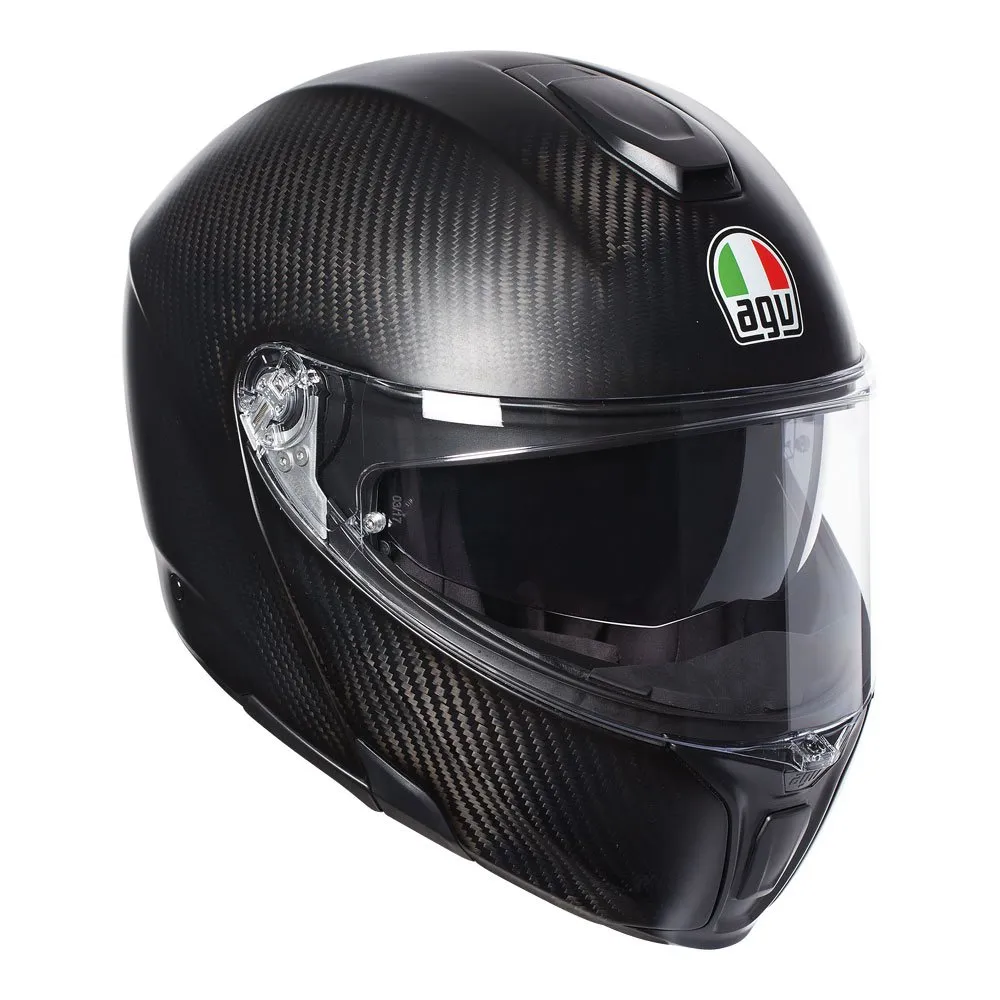
The problem with trusting CRASH is being limited to the helmets they have tested, Caberg being a notable exclusion from that list.
Personally, I love the minimal look of the SHOEI Glamster, Hedon Heroine Racer, and SCHUBERTH C4 Basic, but I’d prefer to see some more stats from CRASH before investing.
Despite being such a highly regarded brand I find it intriguing that SHOEI’s CRASH ratings aren’t that great.
HJC is consistently well-rated in protection and comfort but is probably a tad too “street bike” for me.

I’m drawn to the history of the Bell brand and their Bell Star motorcycle helmet because of its solid CRASH rating, but again, it’s probably a little sportier looking than I would like — the RS-2 or Eliminator is more to my liking.

Depending on how I prefer the fit for my head, I might consider stretching my budget to accommodate the Bell Eliminator because I prefer the style (and the ventilation system) to the Shark Race-R Pro, even if I’m gambling on similar protection performance to the rest of the Bell range tested.
At the end of the day, the best motorcycle helmet for you will be the one that fits into your budget and on your noggin; though CRASH’s protection results are valuable considerations before you fork out your hard-earned cash.
Bonus: A Quick History Lesson
When was the motorcycle helmet invented?
There’s a bit of controversy regarding the actual inventor of motorcycle helmets and when.
Gottlieb Daimler, often referred to as “the father of the motorcycle,” is said to have created a fur-lined leather cap circa 1885, which was to be worn while using his “riding car.” Thus it’s often credited for the invention of the helmet.
However, ambiguity surrounds the safety features of Daimler’s cap, which leads many to believe that a medical officer at the Brooklands Race Track named Eric Gardner created it in 1914 after instructing a Mr Moss of Bethnal Green to make a canvas and shellac helmet to protect riders during races.
Regardless of the controversy, the turning point for motorcycle safety came with the death of T.E. Lawrence.
When you hear the name T.E. Lawrence you think of military strategist and archaeological scholar, Peter O’Toole, and Lawrence of Arabia. But it was his untimely death at the age of 46 that brought attention to the danger of motorcycles and the need to make it a safer activity for riders.

Soon after retiring from RAF in 1935, T.E. Lawrence was involved in an accident just miles from his home in Dorset. He suffered severe head injuries leaving him in a coma for six days, before passing on May 19th, 1935.
Lawrence’s death disturbed Australian neurosurgeon Sir Hugh Cairns, who attended to him while he was in hospital, which led him to begin researching head injuries relating to motorcycle accidents.
In 1941, Cairns published his first report in the British Medical Journal titled Head Injuries in Motorcyclists — The Importance of the Crash Helmet. His work became the first real push for the need to wear motorcycle helmets.
It wasn’t until 20 years later on January 1st, 1961 that Australia led the way by introducing the first-ever mandatory motorcycle helmet law.
The modern motorcycle helmet
In 1953, Professor C.F. Lombard of the University of South California designed the first-ever shock-absorbing helmet.
In 1954 Lombard’s innovation and helmet features were adopted by Roy Richter, the founder of Bell, who introduced the iconic Bell 500. Richter was also responsible for the world’s first full-face motorcycle helmet design, which debuted in 1967.

Today, the motorcycle helmet is the most essential piece of safety equipment a rider can wear. As brands continue to innovate and motorcycles get lighter, faster, and more powerful, Sir Hugh Cairns’ learnings have been more important than ever.
Riding a motorcycle is dangerous. Motorcycle helmets decrease the severity of head injuries, the likelihood of death, permanent disability, and the time recuperating from an injury.
When it comes to selecting the right motorcycle helmet for you, it’s important to prioritise your safety before you consider “looking cool” — the major concern for riders not adopting the helmet in the early days.
Ultimately, it’s your budget that will decide just how much you invest into your head, but fear not, there are plenty of lesser-known brand names making excellent and affordable protective gear. You just have to look.

Best Motorcycle Helmets — (Other) Frequently Asked Questions
What colour motorcycle helmet is the most visible?
Lighter-coloured motorcycle helmets naturally come with better visibility to other drivers and riders (both during the day and at night). All-white or silver are recommended for visibility; as well as bright oranges, yellows, and greens.
What is the strongest motorcycle helmet?
If you want the strongest motorcycle helmets, then your best bet is to look at brands like AGV, Airoh, Bell, KYT, Sena, and Shark.
What motorcycle helmet is best for a long drive?
If you’ve got a journey ahead of you, you’re going to want a full-face motorcycle helmet that prioritises comfort and luxurious features like Bluetooth, while keeping the moneymaker protected from the elements.
Are more expensive helmets safer?
Not necessarily. Brand names might make you feel “cooler” and may have luxury touches, but this doesn’t guarantee that they’re safer. There are plenty of affordable motorcycle helmets that are just as safe because they have prioritised safety features and build quality over flashiness.
Does a half helmet protect you?
Half helmets don’t protect your ears, face, or chin. While they do protect the top of your head, this model of helmet can’t quite offer the protection of a full-face or modular helmet.
Is a full-face helmet safer?
Yes. A full-face helmet will protect the entire face and head so while they may be heavier with less airflow, you’re much safer in them.
Is Shoei a good helmet brand?
Having been around since 1959, Shoei is one of the most dependable helmet brands out there and despite fierce competition remains one of the best motorcycle helmet options.
Is it legal to wear a European motorcycle helmet in Australia?
Yes, United Nations Economic Commission for Europe standard UNECE 22.05 helmets are now approved for wear in all states and territories.
What is the best Bluetooth motorcycle helmet?
I’m of the belief that any additional and unnecessary distraction only makes riding a bike more dangerous. However, for those who don’t enjoy the “escape” of riding and require constant connectivity, integrated Bluetooth helmets have come a long way in the past couple of years. If like me, you’re less inclined to trust a tech-first brand, there are plenty of external Bluetooth communication units available to fit existing brands and styles.
Is it OK to buy a used motorcycle helmet?
Everyone from riders to safety standards experts warns against buying used motorcycle helmets. The second-hand market is flooded with counterfeit products, old products, and units that have been dropped, involved in minor accidents, or have experienced UV degradation. If it’s not coming straight off the shelf or out of the box, it’s likely to have a tainted history, which may affect the structural integrity of the product.
How do you store a motorcycle helmet properly?
Depending on how it is maintained and stored, a motorcycle helmet generally has a life of around five years (three years if used regularly). Helmets come with specific cleaning instructions and often a removable + washable interior. Follow them before storing your helmet safely in a bag to avoid dust accumulation. Store it chin strap down on a shelf or hard surface, somewhere where it won’t be dropped or knocked; away from petrol, cleaning fluids, or excessive heat. These elements can result in the degradation of helmet materials, and often the damage goes unnoticed by the wearer.
